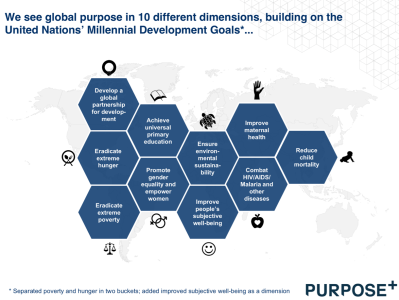Hello all!
Let me start this post on ‘capitalism and our overarching problems’ with a short story about a bird we all know: the peacock. The tails of peacocks have grown larger and larger over time, since larger tails work better in the sexual selection process. The reason is simple: peacocks select mates on the basis of tail size; where larger tails are more attractive than smaller ones. This has presented the peacocks with a problem: after many generations where the tail grew larger and larger, the average peacock tail is quite large. This also makes peacocks heavy, slow, and in significant demand of nutrients. Biologists have called this effect ‘biological suicide’; a fate that might well have happened to the peacocks if humans wouldn’t have interfered and kept them for their beauty.
It can be argued that our economy possesses similar characteristics to the peacock. While our model of capitalism (e.g. private ownership, resources allocated by markets, striving for growth) remains the most efficient, flexible and robust system for driving society’s prosperity, it has significant flaws today that were less visible in the past. The flaws include the relentless focus on ROE (return on equity), on competition with each other and on relentless growth for it’s own sake. In the past these things were more useful: ROE makes sense when business models are very capital intensive (like the old steal factories we still possess in The Netherlands), but less relevant today in a world where the costs of start-ups has plummeted (check our Radical Optimism deck, page 14), and most company value is generated in intangible assets rather than tangible assets. Striving for double digit growth (or ~7%, as China does) also makes a lot of sense when basic resources are not available to many people in a society; but makes less sense when most basic needs are already met in a society for most people. When it comes to competition; it is important to keep in mind that no company truly wants to compete. The ‘sustainable advantage’ companies usually crave is a way to relieve the pressure.
Why are these things important? Because they hold our mental model for how we think the economy/our business should work. And as any psychologist can tell you, mental models predict behaviour.
What is the next step? The world is in desperate need for better, holistic models that can testify to our progression as humans. This is true for all systems with more than one person inside, whether these systems are organisations or countries. Having better metrics on ‘the good side’ (we like to call it purpose) will boost the collective problem solving we need to do, like the search for an agreement to battle global warming, or the refugee crisis. This ‘soft side’ quantification needs to be added to existing measurements on a large scale (GDP for countries; profit KPIs/share price for companies) in order to design truly flourishing organisations, and in the end, societies.
In the picture above, we have taken the liberty to do some preliminary thinking for you on what those dimensions should be. You can find more if you go to our downloads section (click on The Purpose Dimension and Purpose Megatrends for an in-depth view of additional metrics).
Our best wishes for a thought-filled, reflective and productive day!








